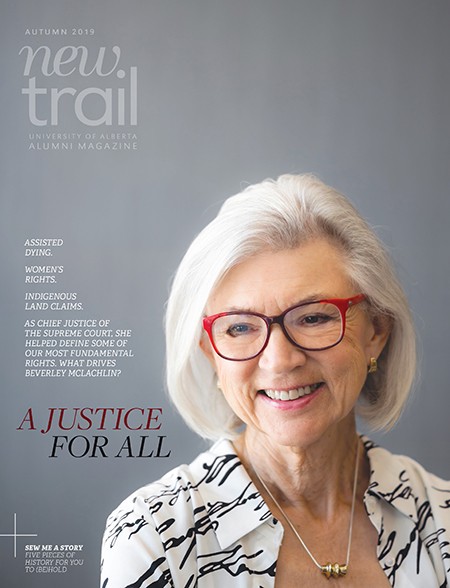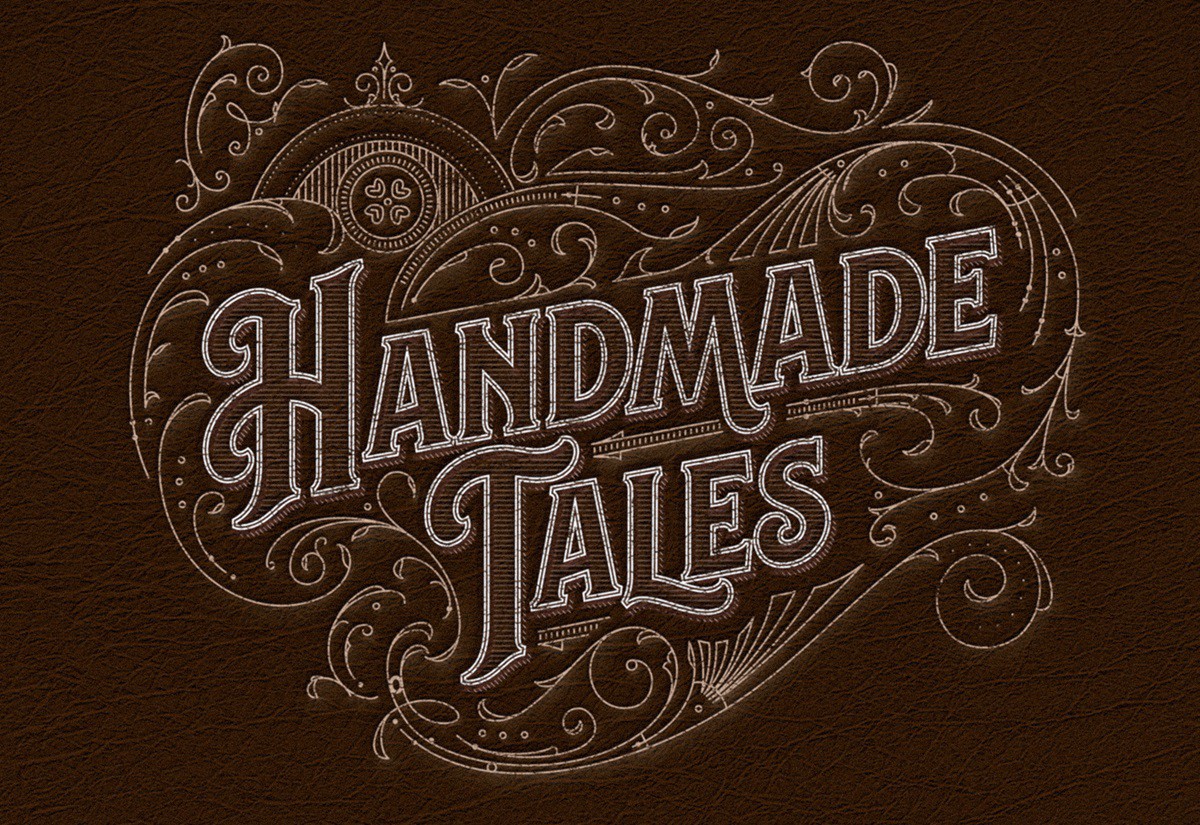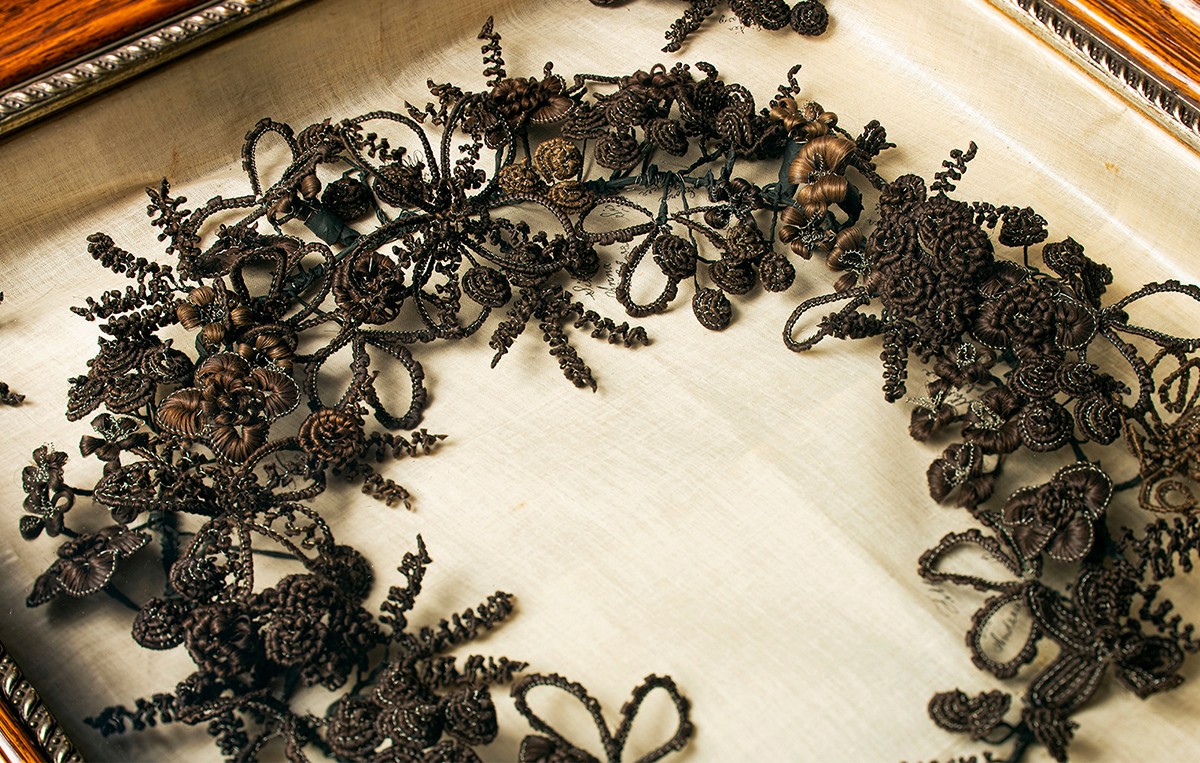
For the last few months, my phone has been bombarded with photos from my mom: a 25-piece tea set. An assortment of spices, unlabelled. Handwoven trivets. Maps of the old country. Medieval-looking kitchen gadgets. Mid-century side-tables. The captions always read the same: "Do you want any of this stuff?"
My mom was helping my Oma, age 96, transition to an assisted-living care facility, and her job was to squeeze a century of stuff into a 600-square-foot room. The question that kept her up every night for months was, "What should we keep and why?"
Answering this question is all in a day's work for Vlada Blinova, collections manager of the U of A's Anne Lambert Clothing and Textiles Collection. She's one of the masterminds behind the collection, housed in the human ecology building, which features more than 23,000 artifacts.
I found myself inside this treasure trove when I was asked to learn more for a story in the Autumn issue of New TrailNew Trail. Walking into the collection's storage facility felt like stepping onto the set of "2001: Museum Odyssey." A long hallway brimmed with futuristic racks which, at the touch of a button, magically slid along their rails to reveal the treasures hidden within: Colourful African textiles next to looms and spindles. A sampling of historic shoes. Rows of hats that exploded my definition of "Sunday's finest."

Throughout the tour, my mind kept going back to the photos of trivets and mid-century furniture my mom had sent me. The humble task of downsizing one household seemed like child's play next to Blinova's job of managing the collection. How on earth do they decide what to keep or discard?
I learned that what makes objects worth preserving is so much more than their monetary value; it's about the stories they tell about who we once were and who we're becoming. They give us a window into everyday life in a unique way.
We chose five unexpected pieces with fascinating stories from the collection to showcase in the Autumn issue of New Trail. Perhaps the most surprising was a Victorian wreath woven from locks of human hair. I later learned hair art was quite the thing back in the day and was used by Victorians to honour the dead. Seeing this object up-close, I was forced to ask myself why it unsettled me so much. I came away with a greater understanding of how our relationship to death has changed over time (Victorians were much more chill about the whole thing).
 Family hair wreath ca. 1890. North Dakota, United States. Photo by John Ulan
Family hair wreath ca. 1890. North Dakota, United States. Photo by John Ulan
By pure coincidence, the hair wreath had been donated to the collection by my friend's family. When I asked them about it (wouldn't you!?) I found the donation was part of their own recent downsizing adventure. Understandably, my friend and her sisters wanted nothing to do with this family "hairloom." What ensued was a successful family game of "dibs out." Luckily, their father still saw the value of this odd piece. He understood that special power that everyday things have to connect us with our past, and with each other.
I now think of the collection as one of the university's best kept secrets - but it doesn't have to be. Check out one of the public exhibitions in the gallery space year-round or this special event (about Victorian tea gowns!) at Alumni Weekend this year. Or you can always sign up for a public tour by appointment. Who knows what stories you might uncover.
Read the full "Handmade Tales" story in the Autumn 2019 issue of New TrailRead the full "Handmade Tales" story in the Autumn 2019 issue of New Trail.
Stephanie Bailey - Communications Associate, Office of Advancement

Stephanie is a Communications Associate with Advancement Strategic Communications and serves as the staff writer for New Trail.
Other must-reads from the Autumn 2019 issue of New Trail:
- Beyond the BenchBeyond the Bench: What's next for former Supreme Court Chief Justice Beverley McLachlin?
- Fair PlayFair Play: Phelps has long arms. Semenya has high testosterone. When life has no level playing field, here's what it means to play fair.